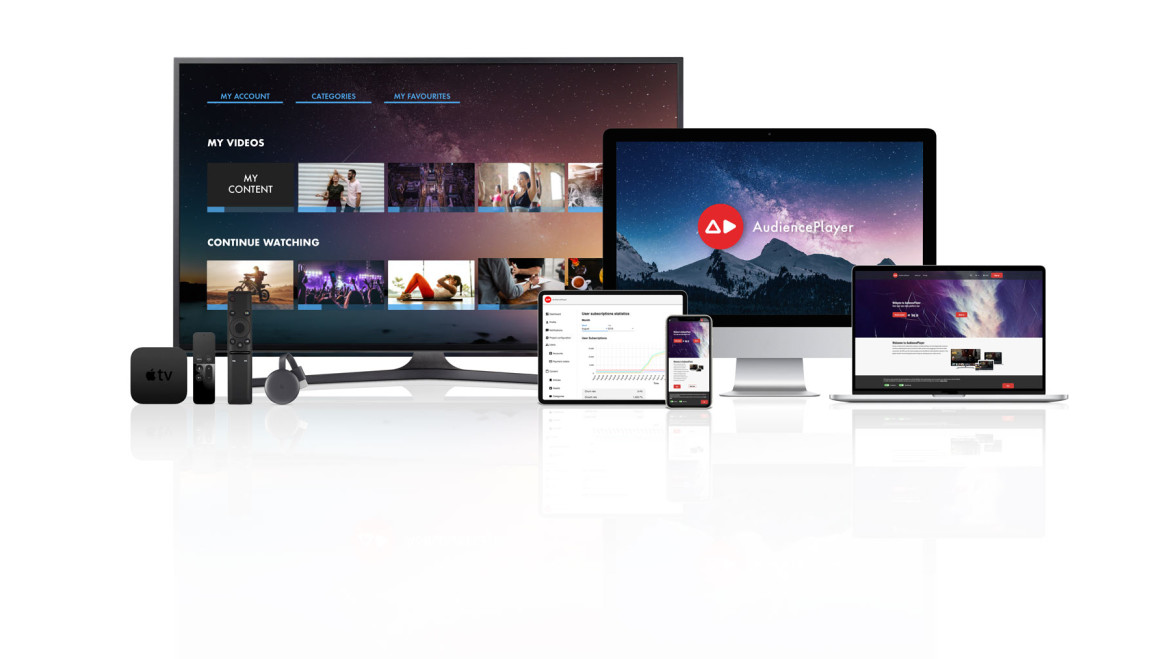Streaming platforms are popular. Since the corona virus outbreak the worldwide usage of video streaming platforms increased exponentially. Comscore underpin this trend with their published data. By the week of April 13, 2020, the average number of daily households streaming entertainment over OTT devices had grown 11 percent since the week of March 9, 2020. Even more noteworthy was the 24 percent increase in average daily streaming hours. When we look at our top customers we have even seen an average 45 percent increase of streaming usage per consumer over the same timeframe.
This exponential growth gives content owners big opportunities to increase their online revenues. However it’s not so simple as it sounds. Multiple streaming platforms are popping up from the ground and consumers are used to premium online experiences, like Netflix. The competitive landscape and increase of consumer expectations make users more critical of streaming platforms. To get maximum succes from your video platform, we share 7 important lessons.
1. Be everywhere
Consumers are using more than 1 device in their living room. Not only laptops, tablets and smart phones are widely used, also smart tv’s, streaming boxes and casting sticks have a substantial market share. The average number of connected devices per person is around 4 in 2020. Expectations are that this number will be around 9 in 2025. When we look at the already mentioned report from Comscore, another trend they have noticed is a gradual shift in favor of streaming through connected TVs. To increase your success, it is important to be present on multiple devices and platforms. Make sure your brand is where the consumer is.

Streaming platform – all devices – AudiencePlayer
2. Engage first, conversion will be later
During the last 3 years our customers have shown repeatedly that most successful online marketing campaigns are the ones that offer a free trial period. Especially during the first months of the coronavirus outbreak we have seen such campaigns had a tremendous positive effect on engagement level. Of course in the end it’s all about the revenue, but don’t worry too much about it. Consumers are always willing to pay for content they love.
3. Launch quickly
Don’t be afraid to just launch your video platform. Let the perfect vision not get in the way of releasing your platform. For example, one of our customers was extremely focused to get the design of their website and mobile apps pixel perfect. They didn’t run online marketing campaigns for almost 24 months. During the outbreak of the coronavirus, hardly anyone knew about the existence of their video platform. As a result, they have potentially lost a lot of turnover. Only when you launch your video platform, you actually know how consumers are experiencing your streaming service. Gathering user data enables you to iterate and optimise your video platform. Trust this proces.
4. Offer different pricing points
Consumers like to select their favourite price point theirselves. Don’t just offer one price for your service, but try to experiment with different models. When we look at our top customers, they all offer a combination of different pricing models. One of our customers offers users 3 types of subscriptions but also the possibility to pay per view. Another customer offers users to buy a subscription based on credits in combination with the possibility to pay per view.
5. Niche streaming platforms are the future
The average money spend per user in the video streaming segment is projected to amount to $58.52 in 2020. Households have an average access to almost 4 streaming services in 2020. On average, consumers use their streaming budget for a combination of premium streaming platforms and niche platforms with content they love. If the budget doesn’t fit, users are more likely to drop one of their premium platforms (Netflix, Disney Plus, HBO, Amazon Prime etc.) in stead of their niche platform. A niche platform can be hugely successful within its target group. However it’s important that your pricing models fits the streaming budget of your target audience.
6. Measure what you treasure
The big advantage of selling your video content online is that you can measure exactly what works and what doesn’t work. Creating a meta data strategy helps to understand what the key ingredients are for success. For example, repackage some videos into new categories and find out in which category users best view these videos. Measuring, iterating and experimenting should be a recurring process in your online business.
7. Keep introducing new features
Don’t be afraid to test new features. Some will work some won’t. Netflix is constantly testing new features that may or may not actually be rolled out to customers. So often, in fact, that it can be difficult to keep up with them. The latest example is their introduction of top 10 lists. It highlights the most popular films and series on their platform. Many video platform owners don’t have the budget Netflix has, but on a smaller scale it’s still possible to introduce a new feature every now and then.





